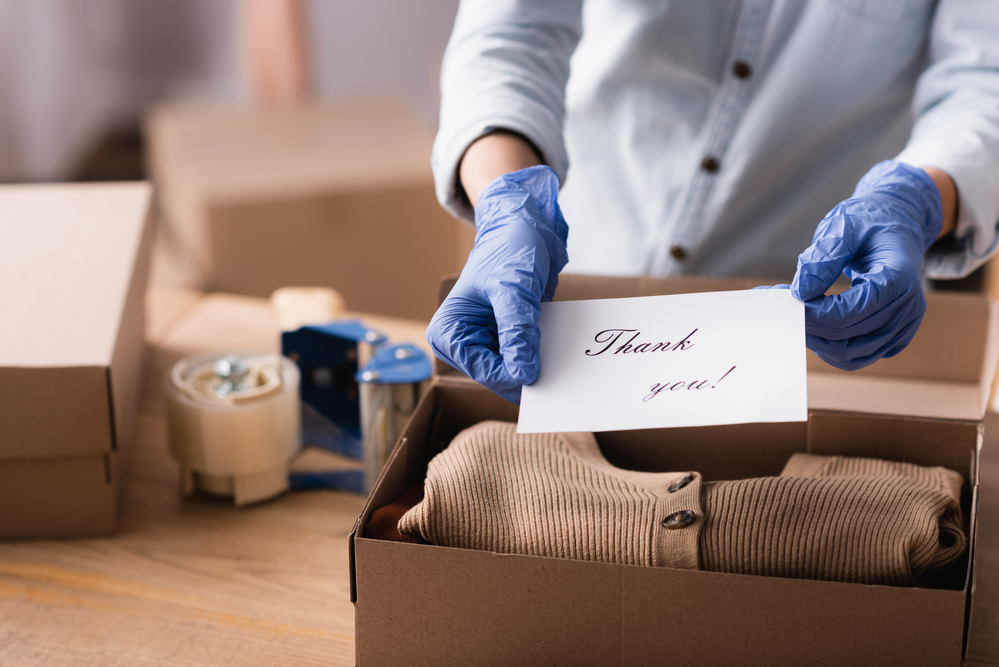You’ve chosen a captivating Shopify store theme, picked a hot product, and ensured that every aspect of your site functions seamlessly. But as you receive your first order, all your bubbly enthusiasm fizzles flat. Before throwing in the towel before the game starts, let Bundle Builder show you how to fulfill orders on Shopify.
How To Fulfill Orders on Shopify: A Practical Handbook

Order fulfillment is the full-circle process of handling customer purchases, from the moment you receive their orders to managing inventory, packaging items, arranging delivery, and tackling returns, reorders, and customer concerns. Let’s examine the journey your product takes from online cart to physical doorstep.
Orders
When customers place orders on your Shopify store, you need a streamlined process in place to ensure you’re firing on all cylinders for receiving and acknowledging orders ASAP.
Shopify provides notifications via email or your Shopify dashboard when customers place an order. You can customize these notifications to include essential details such as the customer’s shipping address, ordered items, and special instructions.
Inventory
Efficient inventory management is the bread and butter of learning how to fulfill orders on Shopify. Without it, knowing for certain whether you have the right products in stock to take care of orders becomes a gamble.
Shopify’s management tools let you track stock levels, receive low-product alerts, and automatically update inventory counts as you fulfill orders. Use features like SKU tracking, item variants, and bulk editing to organize and manage your inventory.
Packaging
Never underestimate the power of receiving a package in the mail. After all, packaging plays a significant role in delighting customers and protecting your products during transit.
Use high-quality, sturdy, lightweight, and eco-friendly packaging materials. For brand identity, customize packages with branded stickers, tissue paper, or thank-you notes.
Shipping
To deliver orders quickly and cost-effectively, choose your shipping options and carriers carefully.
Shopify partners with UPS, FedEx, and USPS, letting merchants compare rates, print shipping labels, and track shipments directly from the Shopify dashboard. Use the platform’s shipping settings to set up shipping zones, rates, and delivery methods according to customer location and preference.
Returns
No matter how well-oiled your order fulfillment machine is, returns are an inevitable part of learning how to fulfill orders on Shopify. If you don’t already have one, create a clear, hassle-free returns policy to help mitigate customer dissatisfaction. Streamline the returns process by delivering prepaid return labels and offering refunds or store credits promptly when you receive returned items.
Fulfillment Models
You’ve got options for order fulfillment, each with considerations to account for to maximize the process.
In-House

Most small and new Shopify store owners, especially those handling a modest volume of orders, often manage fulfillment in-house. Rather than outsourcing these tasks and incurring additional expenses, you might find it more efficient to do order tracking, inventory management, packaging, and shipping yourself.
Automating
Perhaps you can complete a few steps of fulfillment and need some outsourced help with the rest. Consider using fulfillment software that coordinates with fulfillment centers to handle labeling, quality checks, return processing, and other tasks.
Outsource
Perhaps you don’t have the time or skill for fulfillment. If not, you’ve got a couple of options: dropshipping and third-party logistics. With dropshipping, the product manufacturer takes care of all fulfillment logistics. 3PL involves another company stepping in to manage the complete fulfillment process.
Shopify Fulfillment FAQ
Here are answers to common questions about how to fulfill orders on Shopify.
How do you change your Shopify from “unfulfilled” to “fulfilled”?
Changing the fulfillment status of Shopify orders is a quick and easy process:
- Log in to your Shopify dashboard and navigate to the orders page to see all your orders.
- Find the order you want to fulfill and click on it.
- On the order details page, you’ll see the order’s fulfillment status. Change it from “Unfulfilled” to “Fulfilled” by selecting “Mark as fulfilled.”
- Click “Save” or “Mark as fulfilled” to confirm the changes and double-check the order details before finalizing the fulfillment status change.
If you want to provide additional fulfillment information, such as tracking numbers or notes, you can do so in the “Fulfillment details” section.
By following these steps, you can easily keep track of which orders have been processed and shipped to customers.
Should you fulfill orders manually or automatically?
If you create products to order, offer preorders, occasionally run low on stock, or offer partial payment without having to issue a refund, you may prefer Shopify’s default manual order fulfillment. This method helps you track inventory and control when you send orders.
Online stores that only sell items like e-books, digital gift cards, software, or digital downloads may want to switch their order fulfillment settings to automatic. The same applies if you partner with fulfillment services.
How do you receive orders on Shopify?

Shopify uses various channels for notifying merchants of new orders, primarily via the Shopify dashboard and email notifications. While learning how to fulfill orders on Shopify, familiarize yourself with how each channel works.
For instance, when someone places an order, you’ll receive a Shopify admin panel notification. You can see everything from the customer’s name and shipping address to ordered items and payment information.
How do you handle special processing or customization orders?
Shopify apps and integrations have advanced features for handling custom orders, such as adding custom fields during checkout or integrating with third-party fulfillment services for specialized processing.
How do you handle customer order complaints or concerns?
When addressing customer dissatisfaction with an order, actively listen, empathize with their experience, apologize, resolve the complaint, and follow up with the buyer. Consider offering refunds or replacements to turn potentially negative situations into opportunities to foster trust in your brand.
Learn How To Fulfill Orders on Shopify & More From Bundle Builder
Now that you know more about how to fulfill orders on Shopify, take your store to the next level with Bundle Builder. In five minutes or fewer, you can create product bundles and gift boxes customers love. Contact us today to learn how we can help your revenue soar.

